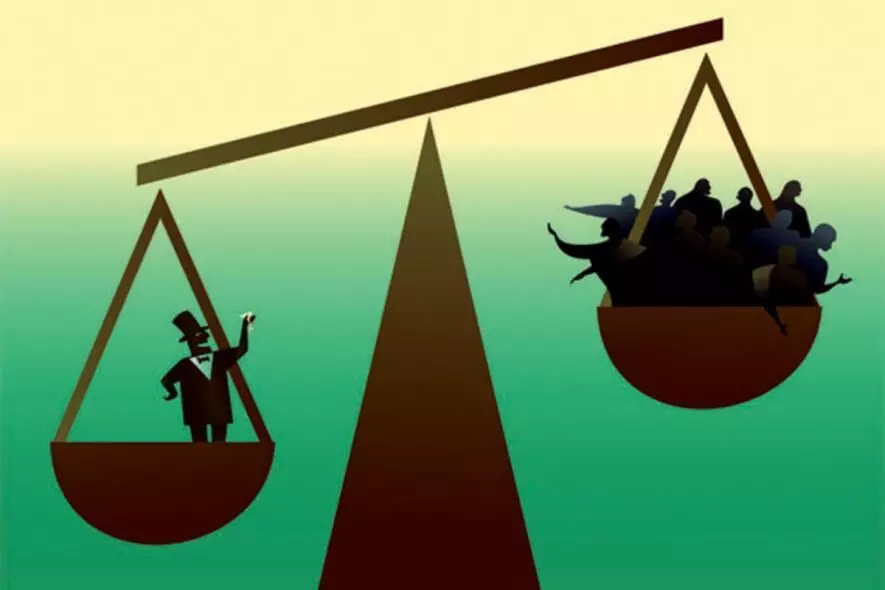Denying the evident?
A research by SBI, which aims to debunk K-shaped recovery claims, is not representative of the Indian economy; it also pedals a newly-destined ‘narrative’

The Economic Research Department of the State Bank of India (SBI) recently published its study Debunking K-shaped recovery. ‘K-shaped recovery’ refers to a situation where some sectors of the economy revive after slowdown or recession while others don’t. It means not all sectors/parts of the economy are recovering. It is being widely debated that the post-pandemic recovery in India has been K-shaped. The debate over K-shaped recovery is also intimately linked to widening inequality in the country. The SBI research study claims to have “debunked” this belief, rather evocatively.
The key message that the report has highlighted hints at a “conspiracy” against India and its growth — some would say an economic evaluation shouldn’t flirt with such conclusions that cast shadows over the credibility or intent of it.
Read the key message: “The oft repeated conundrum debating a K-shaped recovery post-pandemic seems at best flawed, prejudiced, ill-concocted and fanning interests of select quarters to whom India’s remarkable ascendance, signalling more the renaissance of the new global south, is quite unpalatable.”
Further, while junking the parameters deployed to gauge economic well-being, it says, “The patterns emanating from income (and, its disposable part), savings, consumption, expenditure and policy measures aimed at empowering the masses through phygital (Monash University’s Monash Business School defines it as “the concept of using technology to bridge the digital world with the physical world with the purpose of providing a unique interactive experiences for the user”) means and support systems by way of a host of enablers, from food security and money transfer through DBT to multiverse of welfare schemes (Ujjwala to Ayushman Bharat to Awas Yojana to maternal/neonatal welfare) question the efficacy of using ages-old proxies like low 2-wheeler sales or fragmented land holdings to support some pre-destined narratives of India not doing well.”
In the time of extreme polarisation, and when India basks in the glory of “becoming” one of the largest economies soon, the SBI report’s terminologies like “fanning interests”, “remarkable ascendance”, “renaissance of the new global south” seem to have been borrowed from the current hot narratives being scripted and choreographed by the political leadership using fantastical economic situations.
One way, the report is already pedalling a newly-destined “narrative”. The report’s biggest claim is that inequality has come down in India. It says, “The gap between different income levels, measured by the Gini coefficient of taxable income, decreased notably from 0.472 to 0.402 from FY14 to FY22respectively.” Gini coefficient is the most popular measure of economic inequality; a zero score means complete equality and score 1 means complete inequality.
But the research is based on “taxable income” — close to 5 per cent of the total population of the country — meaning those who are paying income tax are thus well employed. In a predominantly informal workforce and economy, this base sample is simply not tenable to deliver a verdict as it has done, on income equality.
It has further analysed the shift of population from the low-income tax bracket to higher ones to claim that income inequality has come down.
Moreover, to claim “remarkable ascendance”, the study uses food orders from Zomato as a proxy. Some 4.4 million people from semi-urban areas actively use this food order platform. The study cites this to debunk the claim that people are facing distress.
To sum up, the research of SBI is not representative of the Indian economy; particularly when the country hasn’t had a consumption expenditure survey since 2011. It just focuses on the “privileged” formal sector that, going by various estimates, has recorded impressive growth. This is also the base of the inequality debate: those who were left out of the country’s growth, continue to lag behind while those already higher up on the income scale, are reporting growth in geometric proportions.
In 2022, The State of Inequality in India report commissioned by the Economic Advisory Council to the Prime Minister, comprehensively brought out rising inequality in India. It said an Indian earning a monthly wage of Rs 25,000 was among the country’s top 10 per cent of earners. It said, “If an amount like this comes in the top 10 percentile, then the bottom-most condition cannot be imagined.”
When one can’t imagine, sometimes s/he tends to re-imagine. The SBI report is a perfect example of this. DTE
Views expressed are personal



